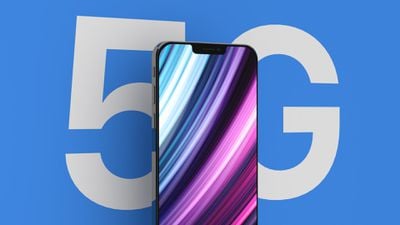The latest shipment estimates for Apple's upcoming mmWave-enabled 5G iPhones are several million units lower than previously expected, which is intensifying competition among suppliers of AiP substrates, reports DigiTimes.

Shipments of mmWave-enabled 5G iPhones slated for launch later this year are estimated to reach only 15-20 million units in 2020 compared to a previous supply chain estimate of 30-40 million units, intensifying competition among Apple's suppliers of FC-AiP substrates for the new phones, according to industry sources.
Apple is believed to be designing its own antenna-in-package or "AiP" module for mmWave iPhones, which use a set of 5G frequencies that promise ultra-fast speeds at short distances, making it best suited for dense urban areas. By contrast, sub-6GHz 5G is generally slower than mmWave, but the signals travel further, better serving suburban and rural areas.
According to DigiTimes, Apple's AIP package is more cost-effective than previous designs, but some analysts believe that models with support for ultra-fast mmWave technology will likely launch after sub-6GHz models due to production challenges and the global health crisis. To counter these challenges, Apple has diversified its supply chain for the modules to minimize risk.
The upcoming mmWave 5G iPhones will adopt more cost-effective FC-AiP process, with ASE Technology to package AiP modules, the sources said. But Apple reportedly has finalized three suppliers of BT-based FC-AiP substrates, including one based in Taiwan and two in South Korea, and they will together supply 30-50 million substrates, the sources said, adding one iPhone will require 2-3 AiP modules.
Prior to the global health crisis, analyst Ming-Chi Kuo said Apple was still on track to release both sub-6GHz and sub-6GHz-plus-mmWave "iPhone 12" models simultaneously in the second half of 2020, with shipments beginning in the late third quarter or early fourth quarter.
Kuo has not indicated whether those plans have since changed, but other analysts have said they believe the mmWave iPhones may not arrive this year because Apple's custom antenna-in-package is proving to be more of a battery drain than the company would like.
Kuo has said 5G iPhone models with mmWave would be available in five markets, including the United States, Canada, Japan, Korea, and the United Kingdom. He also believes Apple may disable 5G functionality in countries that do not offer 5G service or have a shallow 5G penetration rate to reduce production costs.























